Last updated: July 8, 2025
Palomino horses, shimmering golden coats and white manes, have dazzled riders and audiences for centuries, from Spanish royalty in the 1500s to Hollywood icons like Roy Rogers’ Trigger in the 20th century. As a horseman with over 20 years of experience breeding and training horses, I’ve marveled at the beauty and versatility of palominos across farms, trails, and show rings.
Quick Definition: What Is a Palomino Horse? A palomino horse has a golden or cream-colored coat, a white or light mane and tail, and dark skin—distinct from cremellos or buckskins—resulting from a single cream gene on a chestnut base.
This article, rooted in decades of hands-on experience, explores the palomino horse’s genetics, shades, and stories—a standout in many breeds and cultures. Whether you’re identifying one in a field or breeding for this radiant hue, here’s everything you need to know.
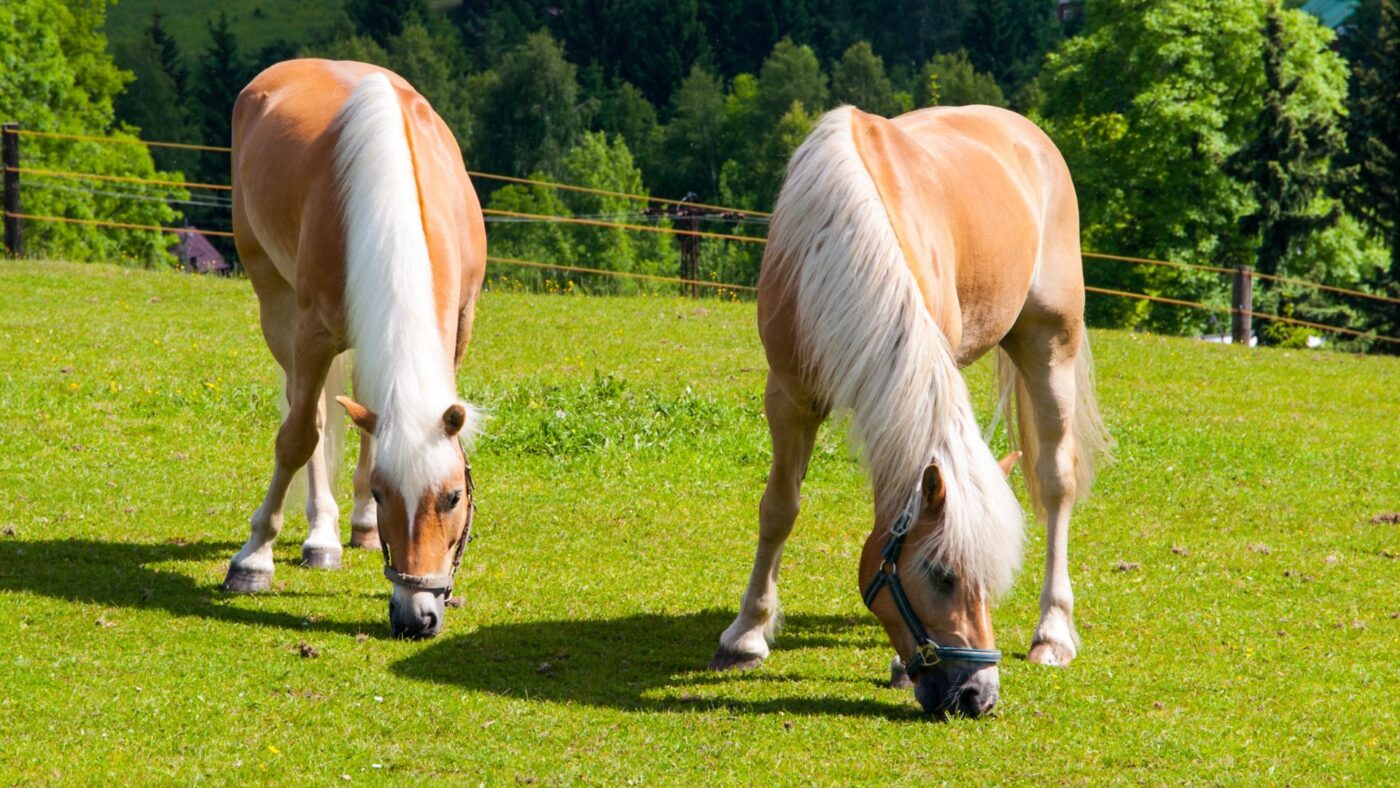
Quick Facts About Palomino Horses
| Height | 14–16 hands (varies by breed) |
|---|---|
| Common Breeds | Quarter Horse, Saddlebred, Morgan, Mustang, Welsh Pony, Paint, Andalusian, Lusitano |
| Typical Price | $5,000–$30,000 (for a trained riding horse) |
| Temperament | Friendly, intelligent, versatile |
| Lifespan | 25–30 years (breed-dependent) |
What Is a Palomino Horse?
A Palomino horse is defined by its golden or cream-colored coat and a white or light mane and tail. Palomino is a color, not a breed, and can occur in many horse breeds. The classic Palomino shade is often described as “the color of a newly minted gold coin,” but shades range from pale cream to deep, rich gold.
Key Features:
- Golden to cream body color
- White or light mane and tail (no dark hairs)
- Dark skin (not pink like cremello)
- Eyes usually brown or hazel
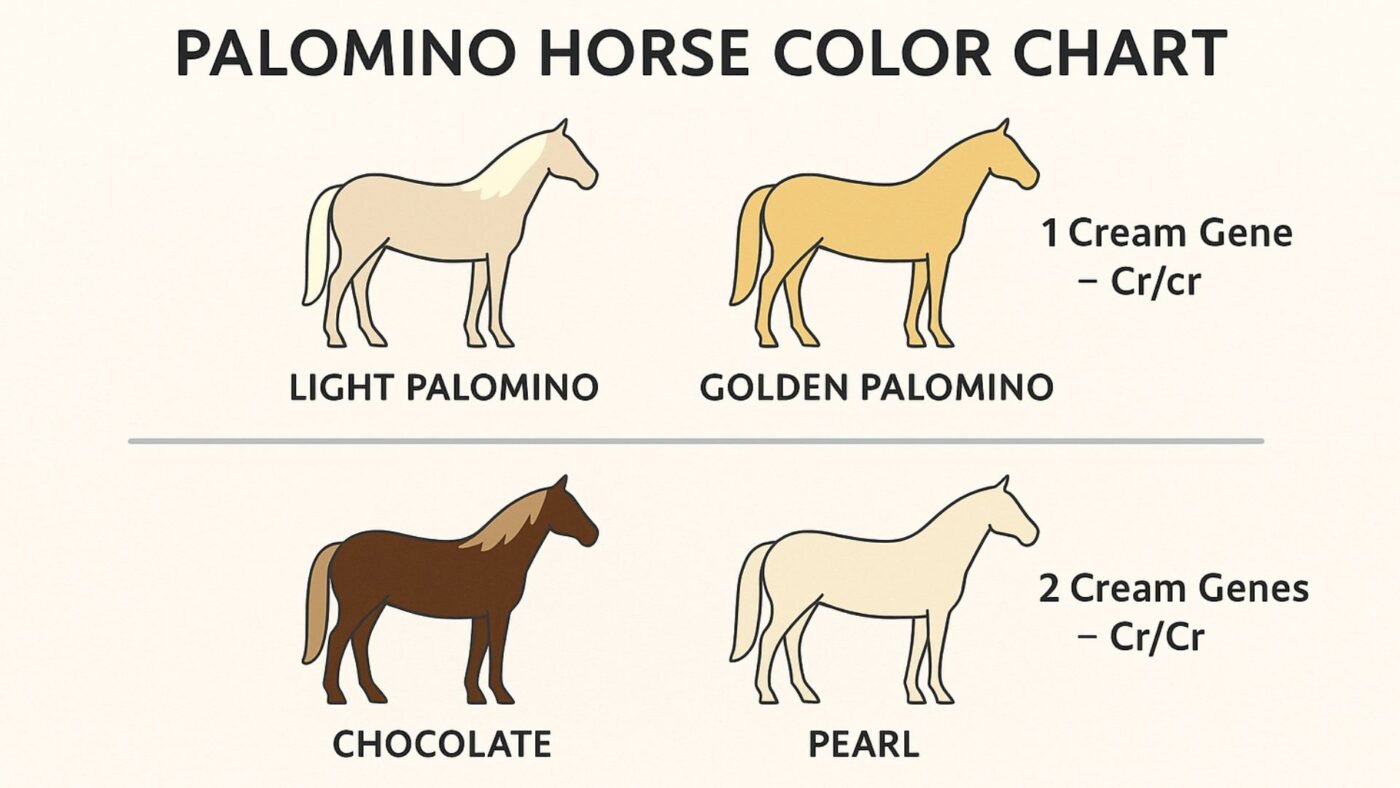
Palominos are prized for their beauty, versatility, and presence in both the show ring and popular culture. If you’re curious how Palominos compare to other stunning horse colors, check out our horse coat colors guide.
Palomino Horse Genetics Explained
To understand what makes a horse a Palomino, we need to explore the role of the cream gene and how it interacts with a chestnut base coat.
How the Cream Gene Works
Palomino coloring results from the interaction of two key genes:
- Extension gene (MC1R): Determines the base coat color. Horses with two recessive alleles (ee) are chestnut-based.
- Cream dilution gene (Cr): A single copy (Crcr) on a chestnut base dilutes the red pigment to gold, producing a Palomino. Two copies (CrCr) result in a cremello (very pale cream, blue eyes).

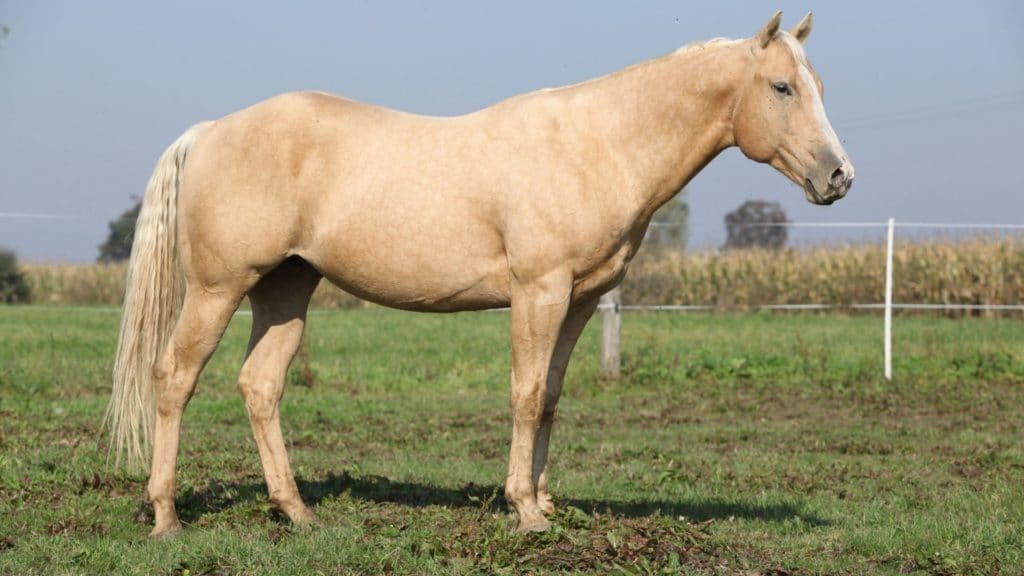
Why Two Palominos Don’t Always Make Another
My foal’s story is a textbook example of how genetics can surprise you. Let’s look at the specific breeding outcomes you can expect based on different parent pairings. When you breed two palominos (each with one cream gene), there are three possible outcomes:
Palomino x Palomino

That means there’s only a 50% chance of another palomino, a 25% chance of a chestnut, and a 25% chance of a cremello—just like my surprise foal.
Palomino x Chestnut
- 50% Palomino (Crcr)
- 50% Chestnut (crcr)
Palomino x Cremello
- 50% Palomino (Crcr)
- 50% Cremello (CrCr)
Beginner Note: Genetic Notation
- ee = chestnut base
- Cr/cr = one cream gene for palomino
- Cr/Cr = two cream genes for cremello
Wondering what color foal you might get?
Try our Palomino Foal Calculator to predict possible outcomes based on your horses’ genetics!
Palomino Foal Calculator
crcr = no cream gene (chestnut), Crcr = one cream gene (palomino), CrCr = two cream genes (cremello)
Genetic Testing Resources
If you ever find yourself surprised by a foal’s color, genetic testing is the best way to get answers. I used the UC Davis Veterinary Genetics Laboratory, which confirmed both parents were palomino and explained the genetics behind my cremello colt. Testing can confirm the presence of the cream gene and help breeders predict foal color outcomes.
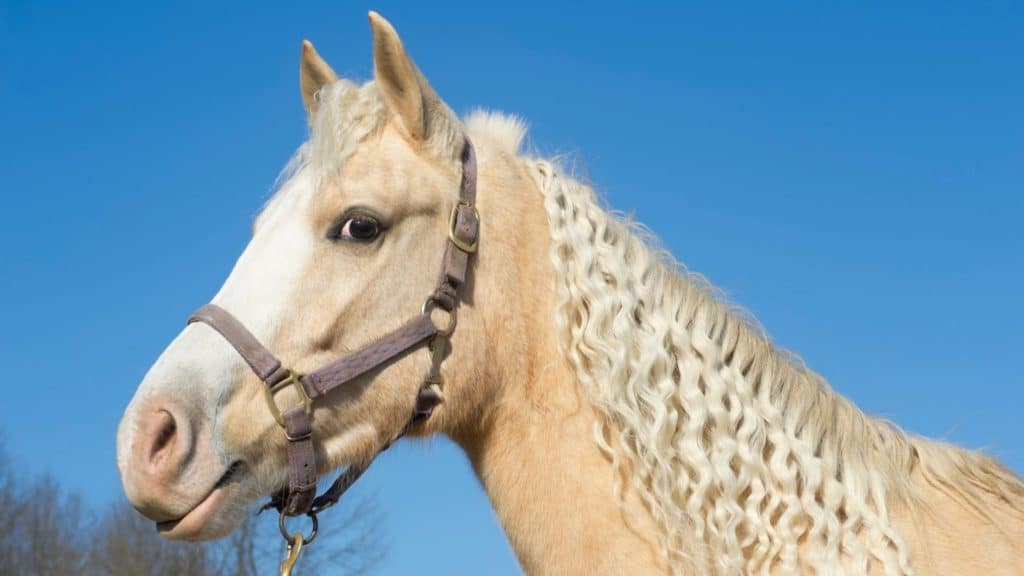
Shades and Variations of Palomino Coat Colors
Palominos come in a range of shades, influenced by genetics, diet, and sunlight exposure. Here are the main types:
| Shade | Description | Example Breeds |
|---|---|---|
| Light Palomino | Pale, almost cream with white mane/tail | American Quarter Horse, Morgan |
| Golden Palomino | Rich gold, classic “gold coin” look | Saddlebred, Tennessee Walker |
| Chocolate | Dark gold or tan, may have sooty shading | Quarter Horse, Mustang |
| Pearl | Rare, iridescent sheen, often in Iberian breeds | Lusitano, Andalusian |
Download: Palomino Horse Color Chart (PDF)
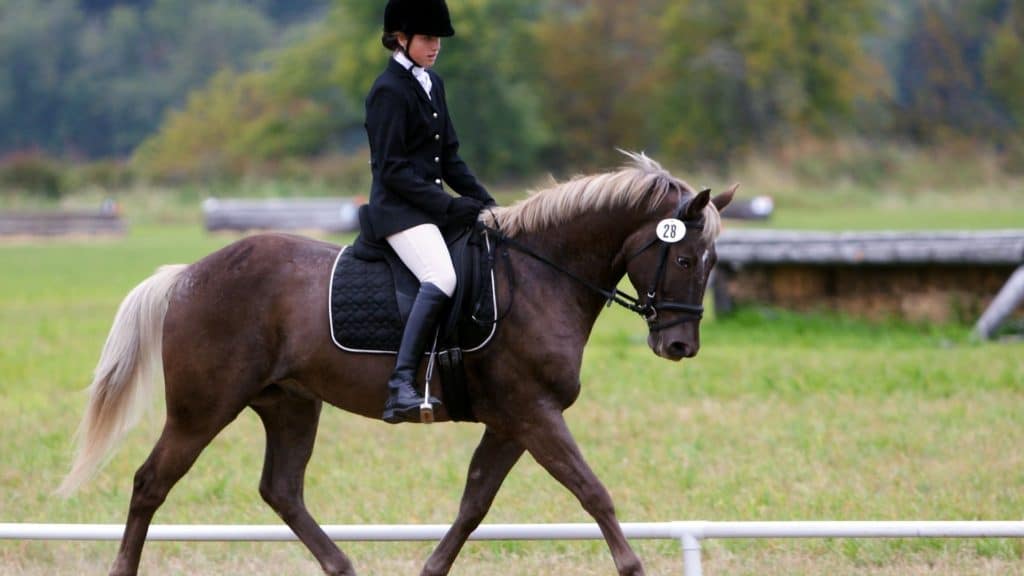
Breeds That Feature Palomino (and Clarifications)
Palomino coloring is most common in:
- American Quarter Horse
- Tennessee Walking Horse
- Morgan
- American Saddlebred
- Welsh Pony
- Mustang
- Paint Horse
- Lusitano
- Andalusian
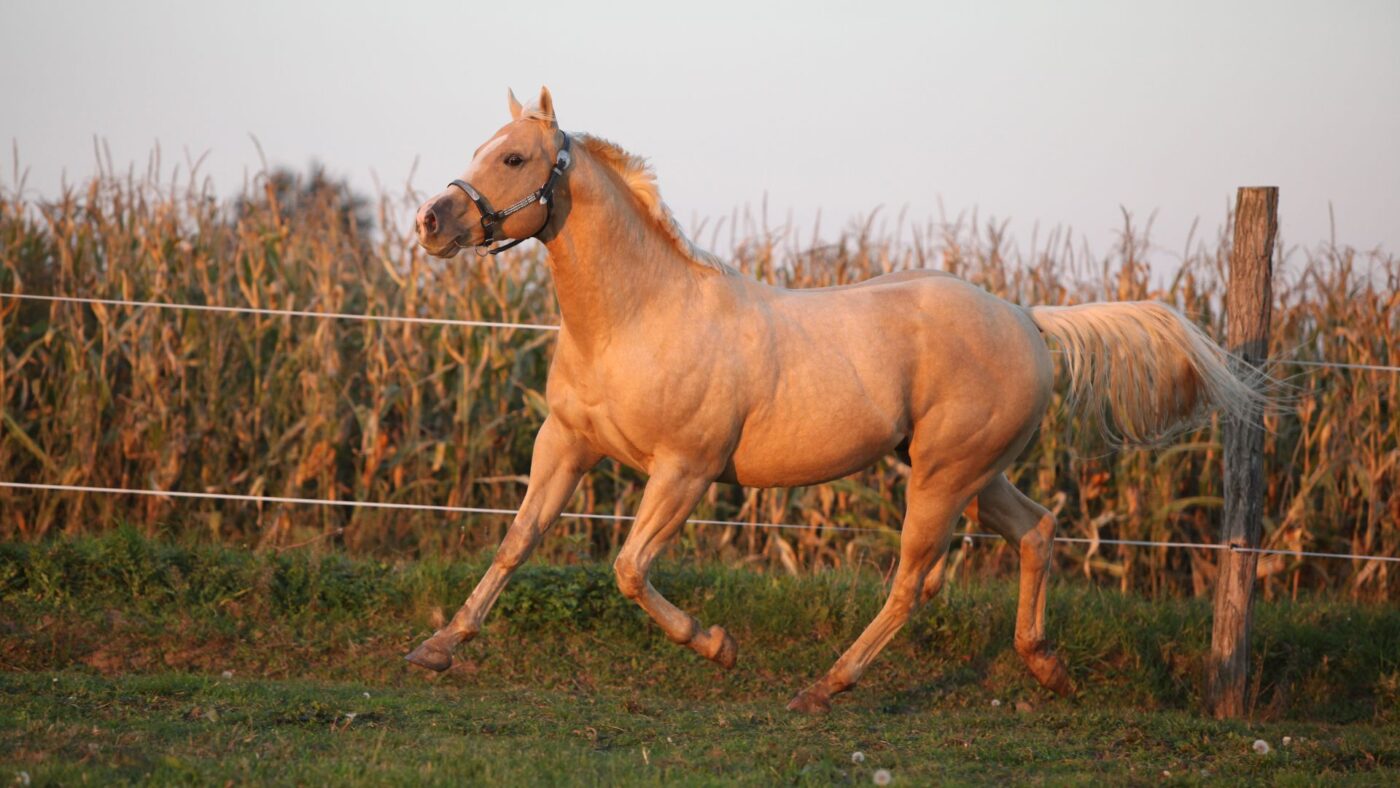
Breed Clarification:
- Haflingers are always chestnut and do not carry the cream gene, so they cannot be true palominos. While their coats may look golden, genetic testing will confirm their chestnut status.
- Some breeds (e.g., Friesian, Clydesdale) do not allow palomino coloring.
This wide distribution across breeds underscores the fact that Palomino coloring is genetically based and not limited to a specific lineage. That’s why understanding the horse’s breed is key if you’re considering a Palomino for specific riding goals or training compatibility.
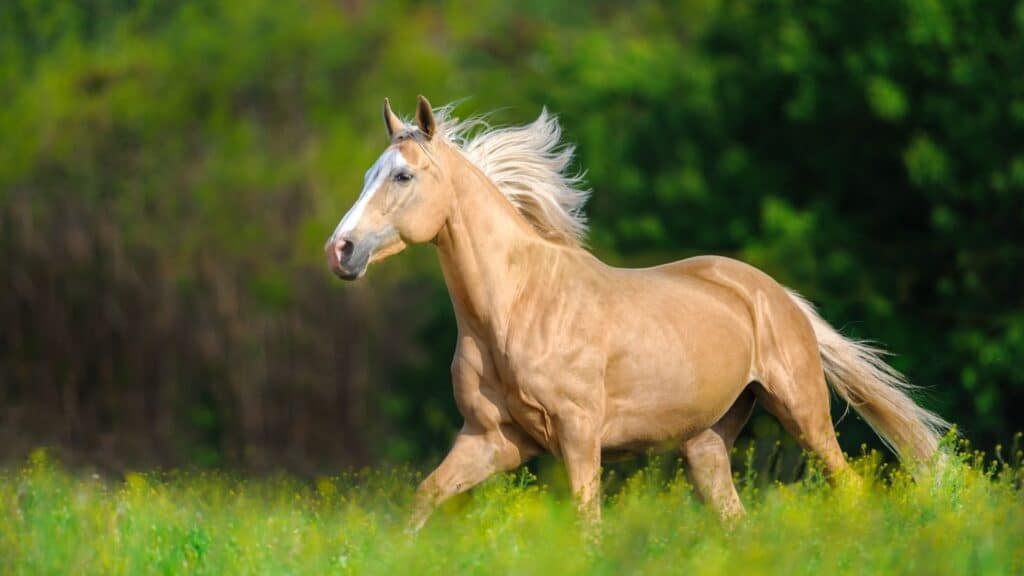
Palomino vs. Similar Coat Colors (Comparison Table)
| Color | Body Color | Mane/Tail | Skin Color | Key Difference |
|---|---|---|---|---|
| Palomino | Gold/cream | White/light | Dark | Chestnut base + 1 cream gene |
| Buckskin | Tan/gold | Black | Dark | Bay base + 1 cream gene |
| Cremello | Very pale cream | White | Pink | Chestnut base + 2 cream genes |
| Flaxen Chestnut | Reddish/gold | White/light | Dark | No cream gene |
| Gold Champagne | Gold/ivory | Ivory | Pink | Champagne gene, not cream |
| Dun | Gold/tan | Black or light | Dark | Dorsal stripe, primitive marks |

History and Cultural Significance
Palominos have a rich history:
- Spanish Royalty: Palominos were favored by Queen Isabella of Spain, who sent them to the Americas with conquistadors.
- Western Films: The iconic horse Trigger (ridden by Roy Rogers) was a palomino, as was Mr. Ed, the talking TV horse.
- Symbolism: Palominos often symbolize wealth, nobility, and good fortune in art and folklore. In Native American cultures, golden horses were sometimes revered as spirit animals.
Explore more in the International Museum of the Horse.

Care and Management Tips
Palomino horses require some special care:
- Sun Sensitivity: Their lighter skin can be prone to sunburn, especially on the muzzle. Use UV-protective sheets, fly masks, and provide shade.
- Coat Care: The light mane and tail stain easily. Regular washing and detangling help keep them bright. Use whitening shampoos as needed.
- Diet: Good nutrition, especially adequate copper and zinc, helps maintain a vibrant coat. Avoid excess iron, which can dull color.
- General Health: Palominos are as hardy as other horses, but continually monitor for common equine health issues.
Want more practical grooming insights? Check out our daily grooming guide to detect health issues early.
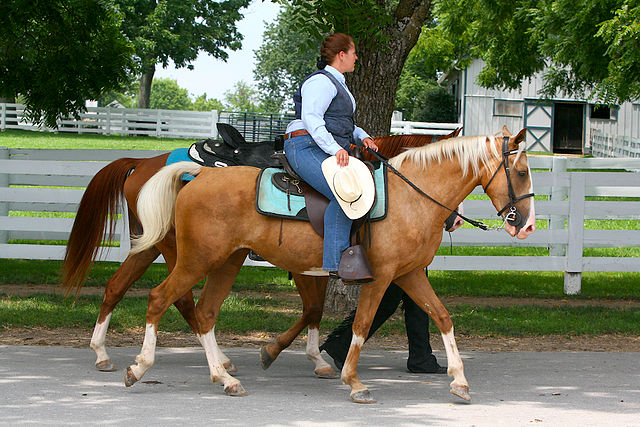
Famous Palomino Horses: Trigger, Mr. Ed & More
Trigger: The Smartest Horse in Hollywood
Trigger, Roy Rogers’ legendary palomino, was more than just a pretty face. Through years of patient, positive training, Trigger learned over 100 tricks—he could untie knots, dance, bow, and even “count” for the camera. His calm, intelligent nature made him a favorite on set and a true partner to Rogers. Off-screen, Trigger delighted crowds with live performances, always eager to show off his skills.
Mr. Ed: The Horse Who Talked His Way Into TV History
Mr. Ed, another famous palomino, charmed audiences in the 1960s sitcom with his “talking” antics. The secret? A dab of peanut butter under his lip (and a lot of clever editing). Mr. Ed’s patience and gentle temperament made him the perfect TV star, and his unique personality is still remembered fondly today.
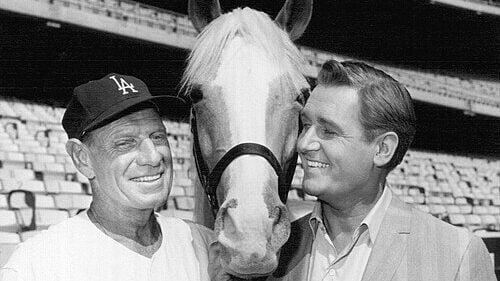
Skipa Gold Streak
SKIPA GOLD STREAK, a champion Palomino, was known for his speed and golden coat, winning hearts and trophies alike.
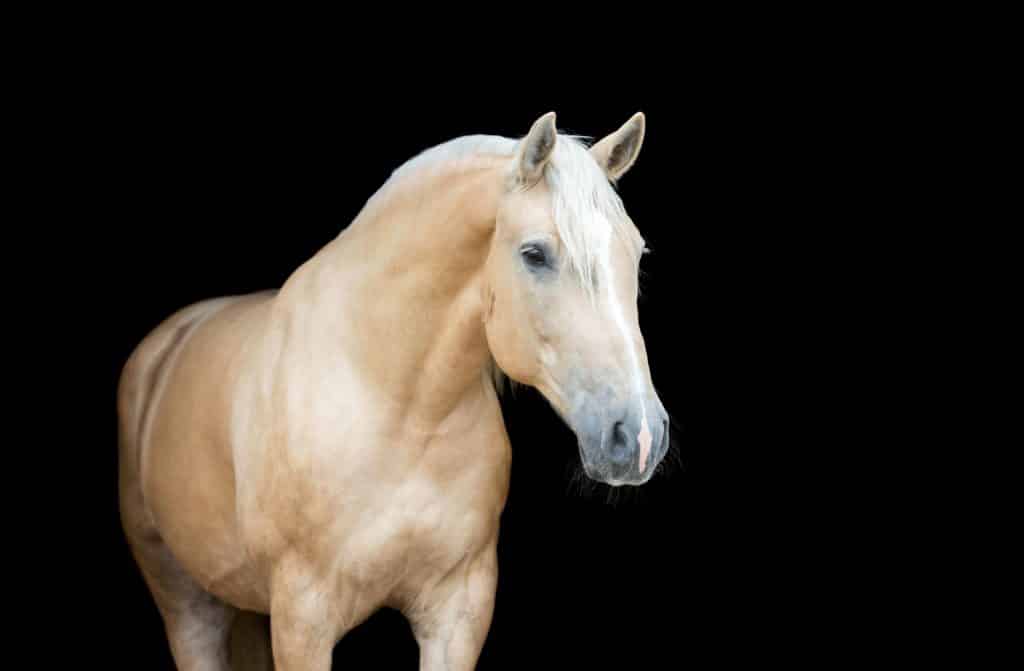
FAQs about Palomino Horses
Got questions? Here are some of the most common ones we hear about Palomino horses.
Is Palomino a breed?
No, Palomino is a color that appears in many breeds.
Can two palominos produce a palomino foal?
Sometimes, but not always. See the genetics section above for details.
Can a black horse have a palomino foal?
No, a black horse (genotype E_ aa) cannot produce a Palomino foal unless it carries a hidden cream gene (making it a smoky black). In that case, if bred to a chestnut horse (ee aa), there is a chance of producing a Palomino (ee A_ Cr). Palomino requires a chestnut base coat.
How much does a palomino horse cost?
Prices vary widely. A trained palomino Quarter Horse may cost $5,000–$30,000.
Are palominos more prone to health issues?
Not generally. Palominos have dark skin, which offers some protection, but their lighter coats and sometimes thinner skin—especially on the muzzle and around the eyes—can make them slightly more susceptible to sunburn than darker-colored horses. Regular shade, fly masks, or sunblock can help prevent sunburn in sensitive areas.
Are Palomino horses rare?
While the Palomino color is certainly striking and admired, it is not considered a particularly rare color in the equine world. The cream gene is present in many breeds, making Palominos relatively accessible.
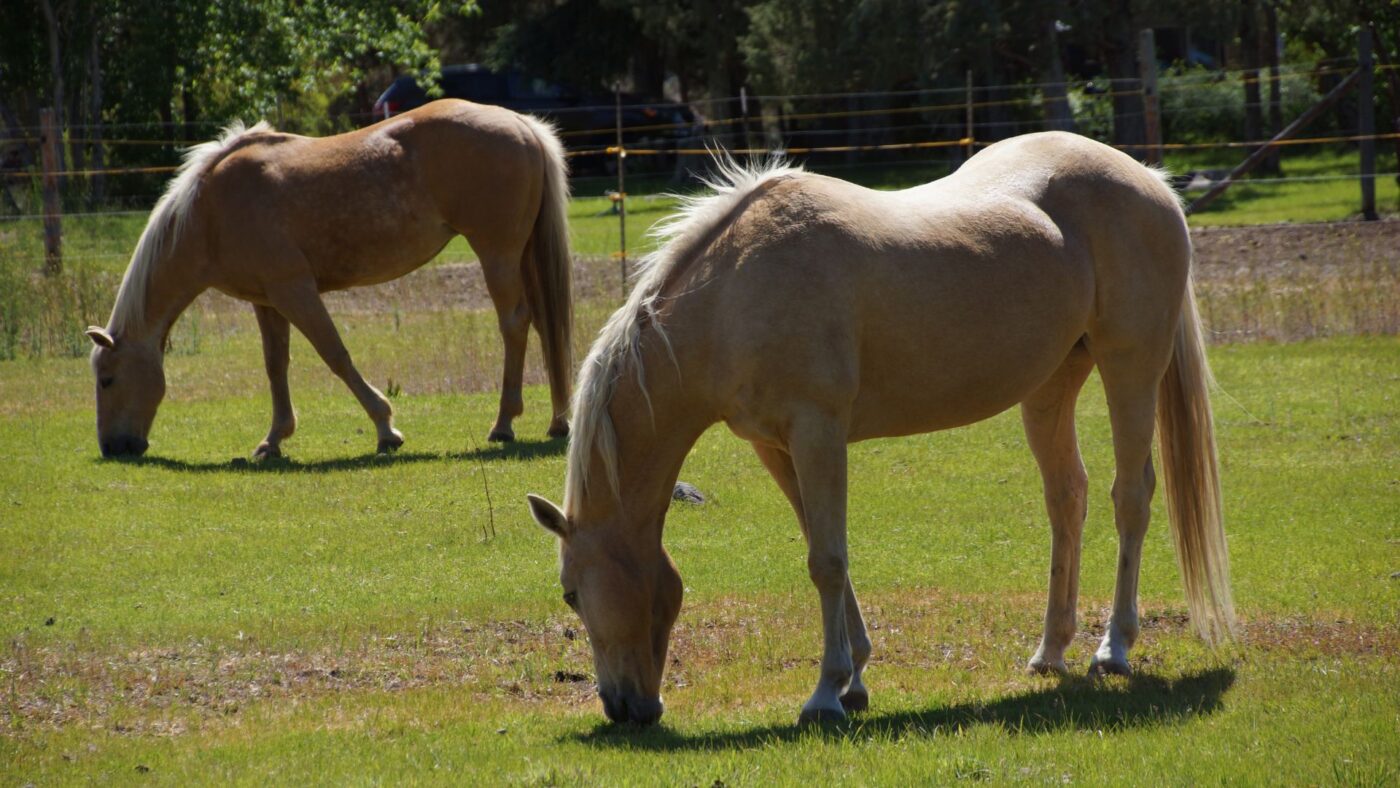
Conclusion
Palomino horses are more than just a beautiful color—they embody a captivating blend of genetics, history, and equestrian tradition. From their shimmering golden coats gracing royal courts to their starring roles in Hollywood films, Palominos have long captured the admiration of horse lovers worldwide. Whether you’re breeding for that perfect shade, grooming their radiant coats, or simply watching them glow in the sunlight, understanding what makes Palominos unique deepens your appreciation for these remarkable horses.
As you’ve seen, Palomino genetics can surprise even experienced owners, and their care calls for a few thoughtful touches. But for many, the reward is a horse that truly turns heads—and wins hearts—everywhere it goes.
Call to Action
Do you own or love a palomino horse? Share your photos and stories in the comments below, or ask your palomino questions—we love hearing from fellow horse enthusiasts! Reach out at miles@horseracingsense.com, or explore more at HorseRacingSense.com.
This article is part of our comprehensive Horse Coat Colors Guide. Explore more to become a true equine color expert!
References
- UC Davis Veterinary Genetics Laboratory – Horse Coat Color
- UC Davis Horse DNA Tests
- Penn State Extension – Horse Colors
- International Museum of the Horse – Color in Horses
- American Quarter Horse Association – Color Genetics
- Wikipedia – Palomino Horse
Internal Links
- Horse Coat Colors: Ultimate Guide With Chart & Genetics
- Advanced Horse Color Genetics: Patterns and Health Insights
- Bay Horse Facts: Coat Color, Genetics, and Fascinating History
- Chestnut Horse Color: Genetics, Shades, Breeds & More
Palomino Registries: PHBA vs. PHA
If you’re planning to register your Palomino horse, two main organizations handle color-based registration: the Palomino Horse Breeders of America (PHBA) and the Palomino Horse Association International (PHA). Both focus on the Palomino coat color but differ in their rules regarding breed type, conformation, and color variations.
For most casual owners, registration isn’t necessary unless you plan to show your horse or breed for color eligibility. Here’s how the PHBA and PHA compare across major registration criteria:
| Feature | PHBA | PHA |
|---|---|---|
| Year Founded | 1941 | 1936 |
| Registration Basis | Color, conformation, and light riding breed affiliation | Color and conformation (any breed) |
| Ideal Body Color | U.S. gold coin | Light to dark golden shades accepted |
| Mane & Tail | Minimum 85% white; max 15% dark hairs | White, silver, or ivory; up to 15% dark/reddish-brown hairs |
| Height Requirement | 14–17 hands (exceptions for registered breeds) | No specific height requirement |
| Skin Color | Dark (pink allowed only under white markings) | Dark or light skin accepted |
| Double Dilutes (Cremellos) | Not accepted for regular registration | Registered with breeder certificate |
| Spotted Patterns (Paint, Pinto, Appaloosa) | Generally not accepted | Accepted if coat color fits guidelines |
| Palomino Bred Registry | Yes, for non-qualifying offspring of registered parents | No equivalent program noted |
Note: Always check the official registry websites for the most current guidelines.
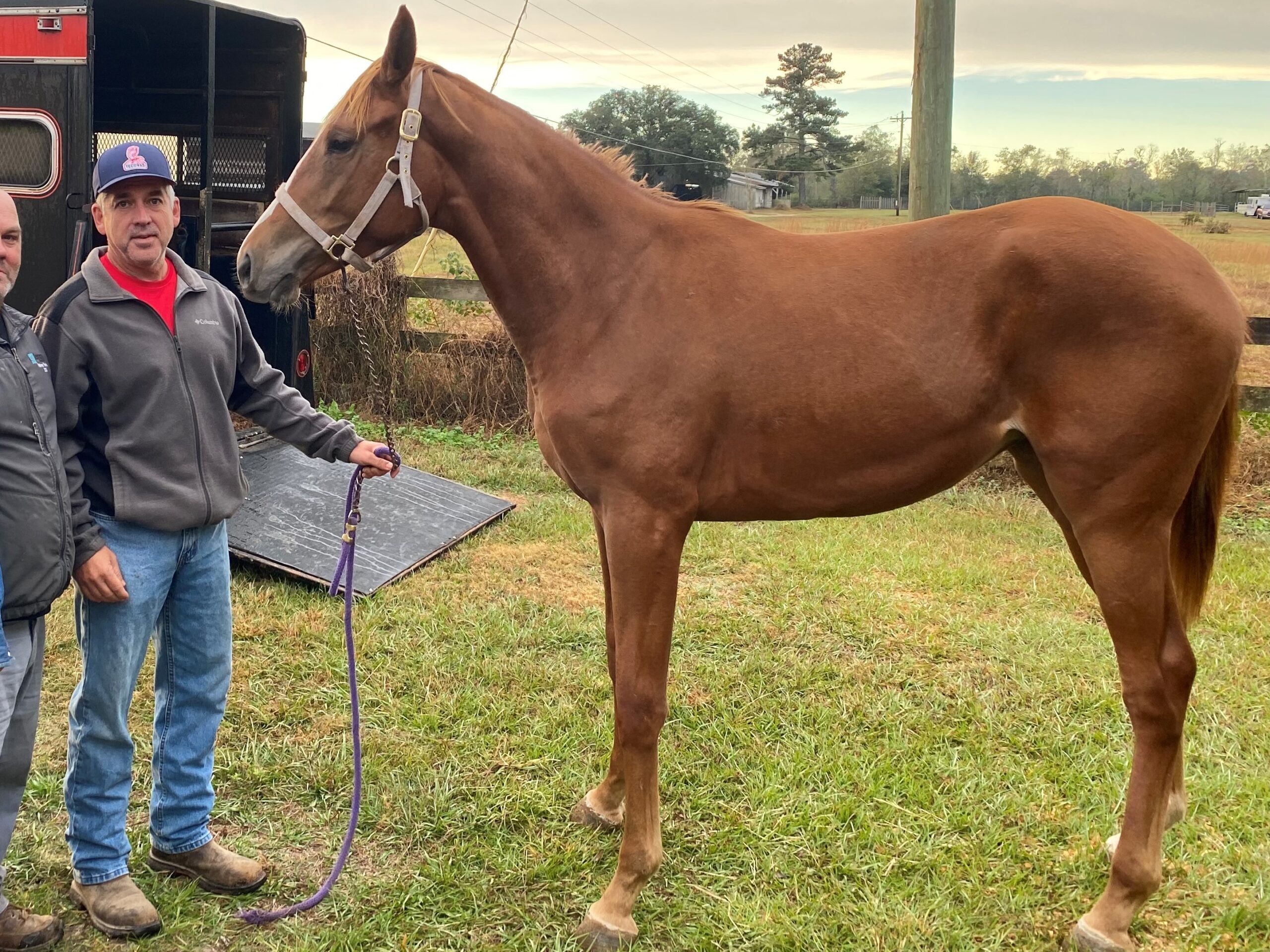
About the Author: Miles Henry
Lifelong Horseman | Racehorse Owner | Published Author
Miles Henry brings over 25 years of hands-on experience training and owning Thoroughbred racehorses. Raised with Quarter Horses and Appaloosas, he’s spent a lifetime learning from horses—on the track, in the barn, and in the field. Today, he runs a small but successful racing stable in Louisiana and shares real-world insights on HorseRacingSense.com, helping horse owners, fans, and bettors navigate the sport with confidence.
📚 Books: View Miles’s books on Amazon »
🎧 Podcast Guest: Animal Tales Ep. 32 |
YouTube Interview
📩 Newsletter: Sign up for racing tips and horse care advice »
🔗 Follow Miles:
Twitter |
Facebook |
YouTube


